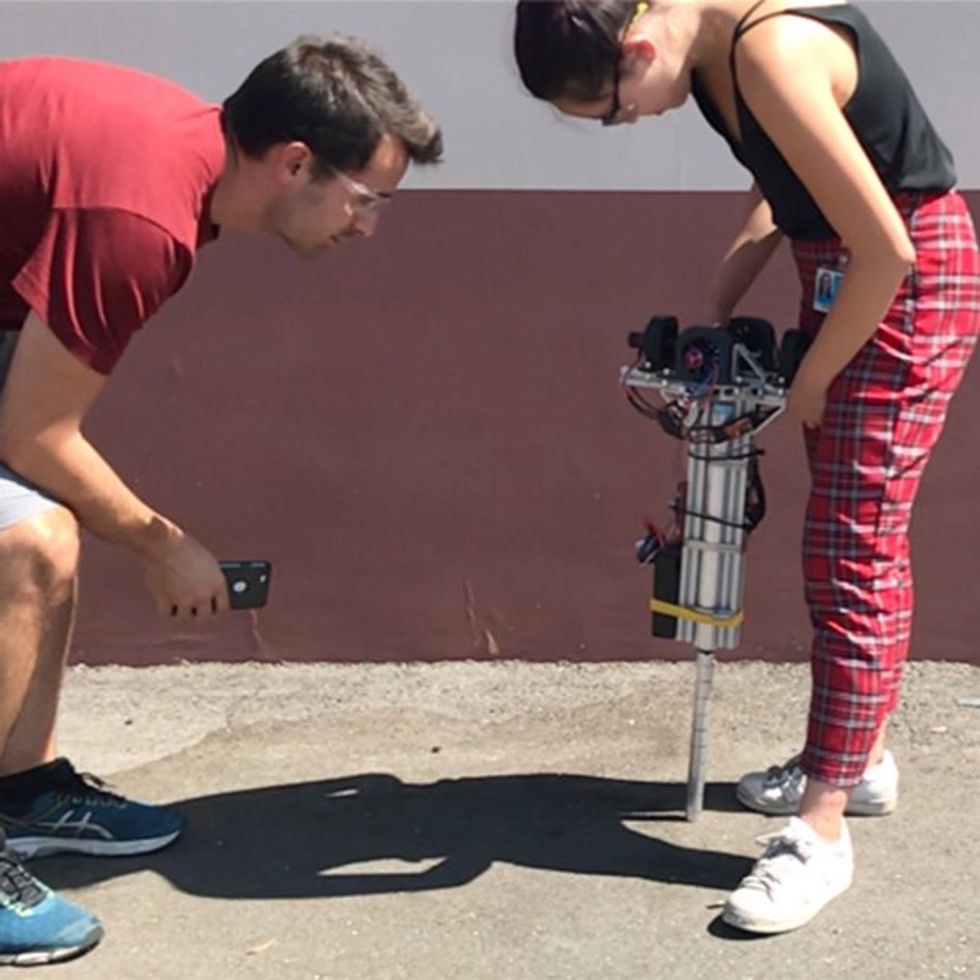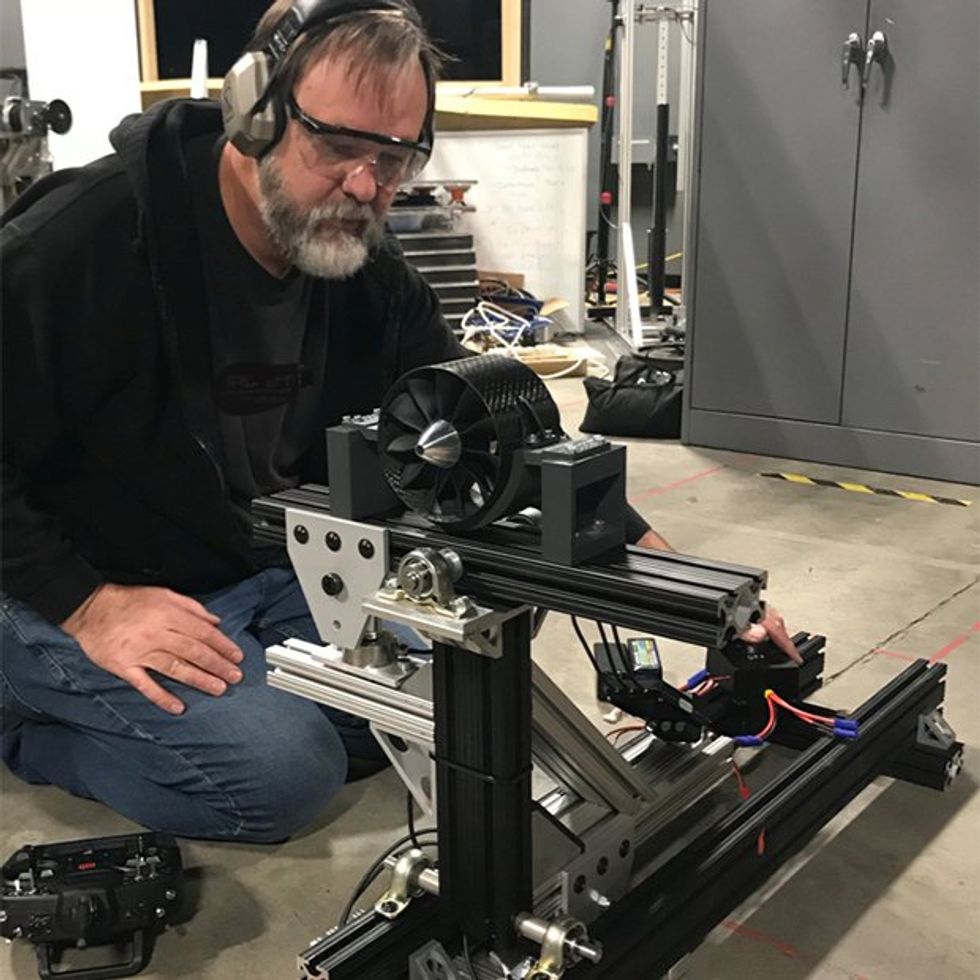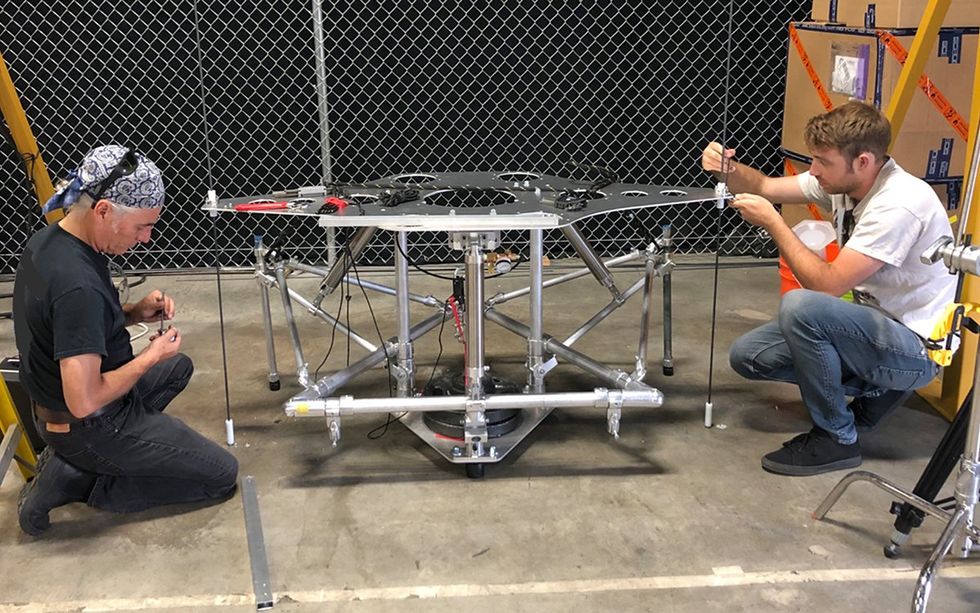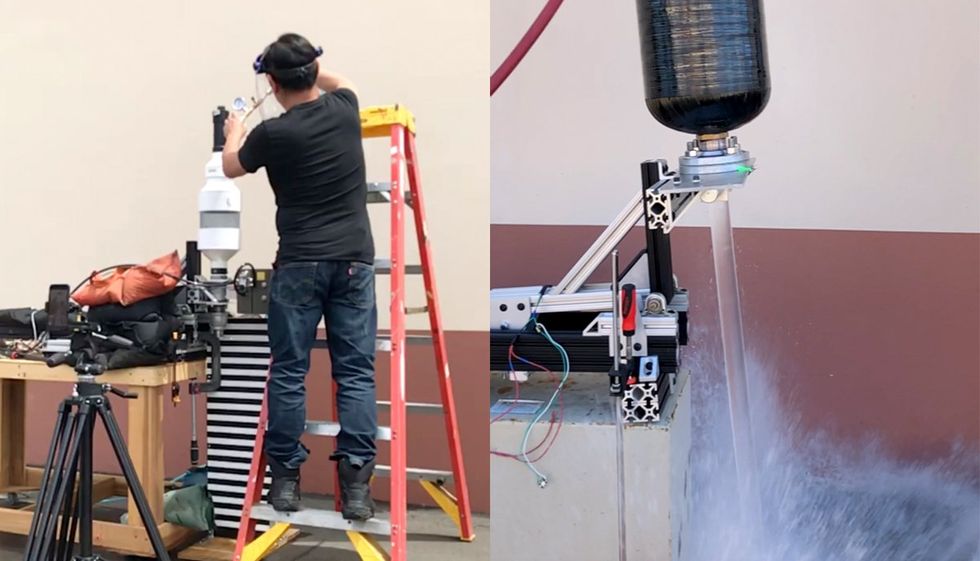Source link : https://earth-news.info/science/disneys-robots-use-rockets-to-stick-the-landing/
It’s hard to think of a more dramatic way to make an entrance than falling from the sky. While it certainly happens often enough on the silver screen, whether or not it can be done in real life is a tantalizing challenge for our entertainment robotics team at Disney Research.
Falling is tricky for two reasons. The first and most obvious is what Douglas Adams referred to as “the sudden stop at the end.” Every second of free fall means another 9.8 m/s of velocity, and that can quickly add up to an extremely difficult energy dissipation problem. The other tricky thing about falling, especially for terrestrial animals like us, is that our normal methods for controlling our orientation disappear. We are used to relying on contact forces between our body and the environment to control which way we’re pointing. In the air, there’s nothing to push on except the air itself!
Finding a solution to these problems is a big, open-ended challenge. In the clip below, you can see one approach we’ve taken to start chipping away at it.
The video shows a small, stick-like robot with an array of four ducted fans attached to its top. The robot has a piston-like foot that absorbs the impact of a small fall, and then the ducted fans keep the robot standing by counteracting any tilting motion using aerodynamic thrust.

The standing portion demonstrates that pushing on the air isn’t only useful during freefall. Conventional walking and hopping robots depend on ground contact forces to maintain the required orientation. These forces can ramp up quickly because of the stiffness of the system, necessitating high bandwidth control strategies. Aerodynamic forces are relatively soft, but even so, they were sufficient to keep our robots standing. And since these forces can also be applied during the flight phase of running or hopping, this approach might lead to robots that run before they walk. The thing that defines a running gait is the existence of a “flight phase” – a time when none of the feet are in contact with the ground. A running robot with aerodynamic control authority could potentially use a gait with a long flight phase. This would shift the burden of the control effort to mid-flight, simplifying the leg design and possibly making rapid bipedal motion more tractable than a moderate pace.

In the next video, a slightly larger robot tackles a much more dramatic fall, from 65’ in the air. This simple machine has two piston-like feet and a similar array of ducted fans on top. The fans not only stabilize the robot upon landing, they also help keep it oriented properly as it falls. Inside each foot is a plug of single-use compressible foam. Crushing the foam on impact provides a nice, constant force profile, which maximizes the amount of energy dissipated per inch of contraction.
In the case of this little robot, the mechanical energy dissipation in the pistons is less than the total energy needed to be dissipated from the fall, so the rest of the mechanism takes a pretty hard hit. The size of the robot is an advantage in this case, because scaling laws mean that the strength-to-weight ratio is in its favor.
The strength of a component is a function of its cross-sectional area, while the weight of a component is a function of its volume. Area is proportional to length squared, while volume is proportional to length cubed. This means that as an object gets smaller, its weight becomes relatively small. This is why a toddler can be half the height of an adult but only a fraction of that adult’s weight, and why ants and spiders can run around on long, spindly legs. Our tiny robots take advantage of this, but we can’t stop there if we want to represent some of our bigger characters.

In most aerial robotics applications, control is provided by a system that is capable of supporting the entire weight of the robot. In our case, being able to hover isn’t a necessity. The clip below shows an investigation into how much thrust is needed to control the orientation of a fairly large, heavy robot. The robot is supported on a gimbal, allowing it to spin freely. At the extremities are mounted arrays of ducted fans. The fans don’t have enough force to keep the frame in the air, but they do have a lot of control authority over the orientation.
Complicated robots are less likely to survive unscathed when subjected to the extremely high accelerations of a direct ground impact, as you can see in this early test that didn’t quite go according to plan.
In this last video, we use a combination of the previous techniques and add one more capability – a dramatic mid-air stop. Ducted fans are part of this solution, but the high-speed deceleration is principally accomplished by a large water rocket. Then the mechanical legs only have to handle the last ten feet of dropping acceleration.
Whether it’s using water or rocket fuel, the principle underlying a rocket is the same – mass is ejected from the rocket at high speed, producing a reaction force in the opposite direction via Newton’s third law. The higher the flow rate and the denser the fluid, the more force is produced. To get a high flow rate and a quick response time, we needed a wide nozzle that went from closed to open cleanly in a matter of milliseconds. We designed a system using a piece of copper foil and a custom punch mechanism that accomplished just that.

Once the water rocket has brought the robot to a mid-air stop, the ducted fans are able to hold it in a stable hover about ten feet above the deck. When they cut out, the robot falls again and the legs absorb the impact. In the video, the robot has a couple of loose tethers attached as a testing precaution, but they don’t provide any support, power, or guidance.
“It might not be so obvious as to what this can be directly used for today, but these rough proof-of-concept experiments show that we might be able to work within real-world physics to do the high falls our characters do on the big screen, and someday actually stick the landing,” explains Tony Dohi, the project lead.
There are still a large number of problems for future projects to address. Most characters have legs that bend on hinges rather than compress like pistons, and don’t wear a belt made of ducted fans. Beyond issues of packaging and form, making sure that the robot lands exactly where it intends to land has interesting implications for perception and control. Regardless, we think we can confirm that this kind of entrance has–if you’ll excuse the pun–quite the impact.
>>> Read full article>>>
Copyright for syndicated content belongs to the linked Source : IEEE – https://spectrum.ieee.org/disney-robot-2668135204
Author : earthnews
Publish date : 2024-05-12 14:51:25
Copyright for syndicated content belongs to the linked Source.